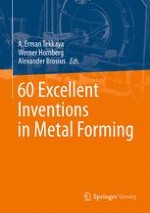2015 | OriginalPaper | Buchkapitel
Further Development on Tube Hydroforming
verfasst von : Ken-ichi Manabe, Sadakatsu Fuchizawa
Erschienen in: 60 Excellent Inventions in Metal Forming
Verlag: Springer Berlin Heidelberg
Aktivieren Sie unsere intelligente Suche, um passende Fachinhalte oder Patente zu finden.
Wählen Sie Textabschnitte aus um mit Künstlicher Intelligenz passenden Patente zu finden. powered by
Markieren Sie Textabschnitte, um KI-gestützt weitere passende Inhalte zu finden. powered by
